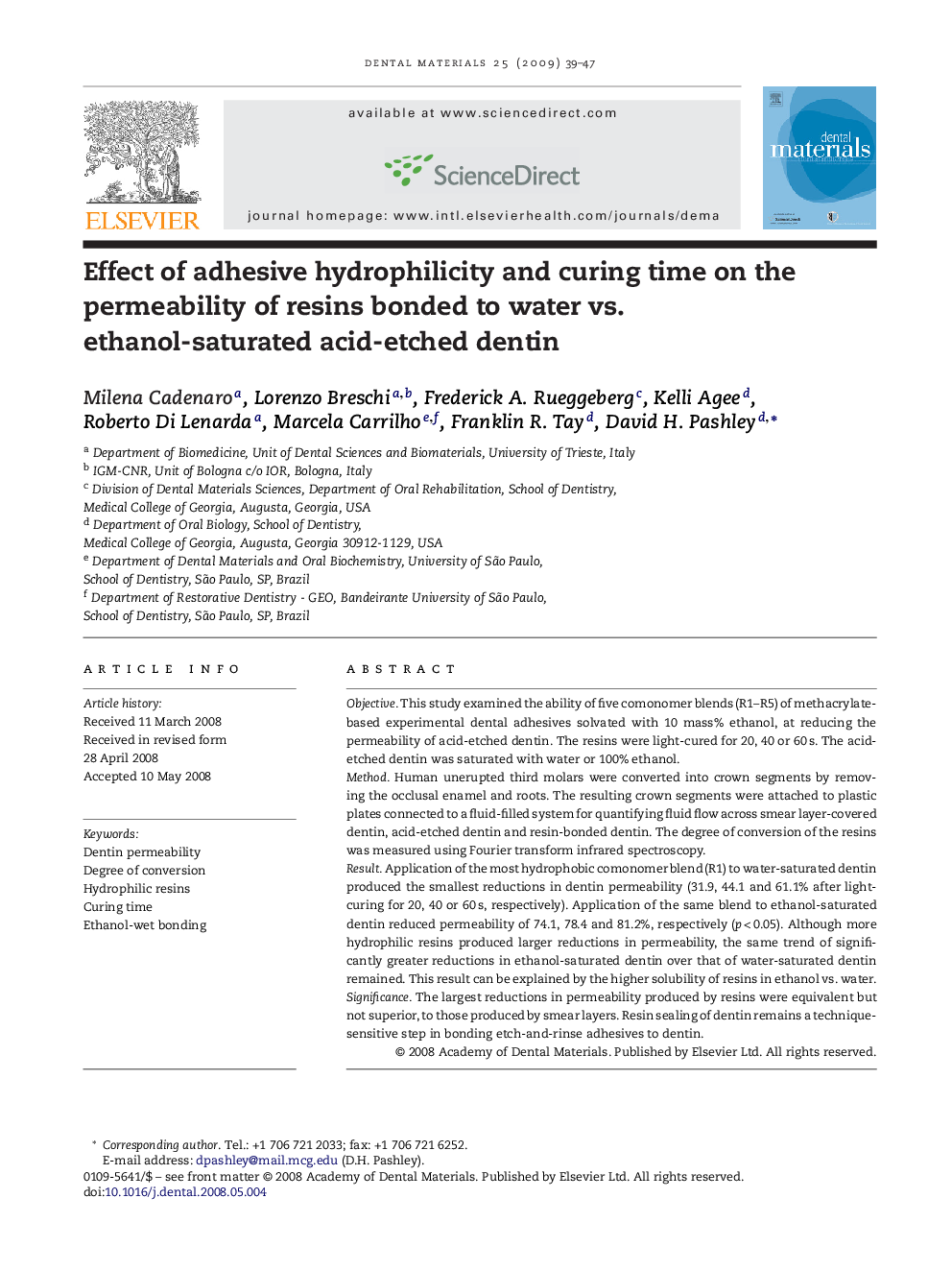| Article ID | Journal | Published Year | Pages | File Type |
|---|---|---|---|---|
| 1422515 | Dental Materials | 2009 | 9 Pages |
ObjectiveThis study examined the ability of five comonomer blends (R1–R5) of methacrylate-based experimental dental adhesives solvated with 10 mass% ethanol, at reducing the permeability of acid-etched dentin. The resins were light-cured for 20, 40 or 60 s. The acid-etched dentin was saturated with water or 100% ethanol.MethodHuman unerupted third molars were converted into crown segments by removing the occlusal enamel and roots. The resulting crown segments were attached to plastic plates connected to a fluid-filled system for quantifying fluid flow across smear layer-covered dentin, acid-etched dentin and resin-bonded dentin. The degree of conversion of the resins was measured using Fourier transform infrared spectroscopy.ResultApplication of the most hydrophobic comonomer blend (R1) to water-saturated dentin produced the smallest reductions in dentin permeability (31.9, 44.1 and 61.1% after light-curing for 20, 40 or 60 s, respectively). Application of the same blend to ethanol-saturated dentin reduced permeability of 74.1, 78.4 and 81.2%, respectively (p < 0.05). Although more hydrophilic resins produced larger reductions in permeability, the same trend of significantly greater reductions in ethanol-saturated dentin over that of water-saturated dentin remained. This result can be explained by the higher solubility of resins in ethanol vs. water.SignificanceThe largest reductions in permeability produced by resins were equivalent but not superior, to those produced by smear layers. Resin sealing of dentin remains a technique-sensitive step in bonding etch-and-rinse adhesives to dentin.
